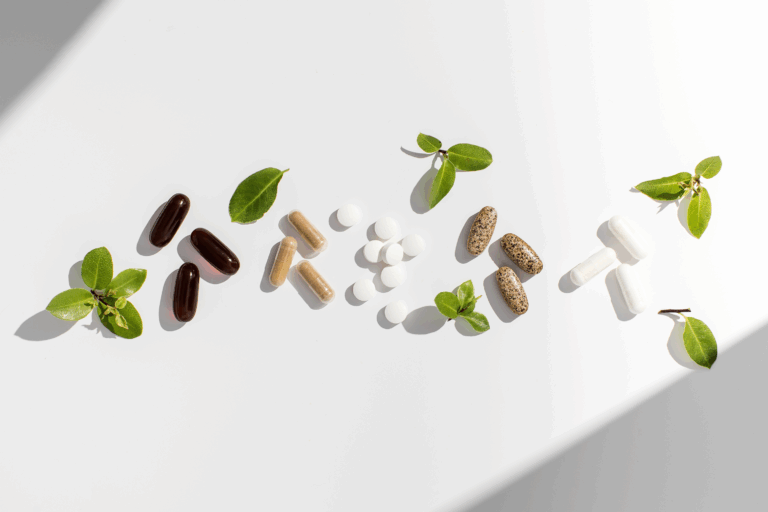Colostrum: More than Milk
Colostrum: More than Milk
Colostrum in Pregnancy and After Birth
Colostrum is the “first milk” produced by the mammary glands after birth and lasts only a short time before its composition changes.1,2 For many mammals, colostrum and mature milk is essential for the survival of the newborn offspring.3 Colostrum provides nutrients for growth, energy, and development as the newborns transition from placental supply before birth to oral ingestion of complex macromolecules after birth.3 Colostrum also provides immune protection that supports the innate immunity of neonates before their system can mature and adapt to the environment.3
In humans, colostrum is not necessary for survival for infants born full-term (37 weeks’ gestation and longer), but it does provide many health benefits.3 Colostrum becomes even more vitally important for pre-term infants, who are most likely to suffer from complications in utero and in the immediate postnatal period, resulting in growth failure and high susceptibility to infections, gut disorders, lung complications, and brain damage.3 Because immune protection starts before birth with the passive transfer of immunoglobulins occurring in the last trimester of pregnancy, pre-term infants may be missing critical immune pieces and therefore require more intense intervention — or risk poor health outcomes.3 The immunoglobulins in colostrum provide a first line of defense to mark pathogens for destruction in the gut and modulate immune function in the intestinal mucosa to limit inflammation, in addition to many other benefits.3
Nutritional Composition of Colostrum
Colostrum is a concentrated source of vital nutrients and compounds that help jumpstart a newborn’s system in the first days of life and can serve as the sole source of nutrients they need. The composition changes substantially as the milk matures due to a partially open blood-milk barrier in the mammary gland around the time of birth.2,3 The primary difference between colostrum and mature milk is the concentrated presence of macronutrients and micronutrients, anti-microbial factors, immune-stimulating components, and growth factors.1,2
Carbohydrates
Human colostrum contains both simple and complex sugars, including a higher percentage of oligosaccharides (carbohydrates linking 3 to 10 individual units), although levels decrease significantly 48 hours postpartum.3 Oligosaccharides are anti-inflammatory, can function as prebiotics, exhibit anti-adhesion effects, and have a role in the development of both brain and intestinal cells.3 They may also act as competitive inhibitors for pathogenic bacteria, protecting from infection and promoting the growth of beneficial bacteria, specifically Bifidobacteria.1,3 These bacteria provide further benefits by inhibiting the growth of harmful bacteria and producing butyric acid, a short chain fatty acid that fuels intestinal cells; some gut bacteria can even inhibit inflammatory responses.1
Lipids
Milk fat globules are sources of lipids including triacylglycerols in colostrum.3 The composition of milk fat globule membranes (MFGM) varies greatly and is influenced by environmental factors, gestation period, maternal genetics, body composition, and diet.3 The major classes of lipids in MFGM include phospholipids and sphingolipids.3 The consumption of milk fortified with the sphingolipid sphingomyelin has been demonstrated to be beneficial for neurobehavioral development.3
MFGMs also contain other bioactive molecules, many of which possess antimicrobial, anti-inflammatory, and anti-carcinogenic activity.3 Gangliosides, complex lipids, are involved in diverse cellular functions as well as immune response.1 They can act as receptors for various bacteria and toxins, protecting other cells and tissues from pathogenic invasion; they are also involved in cytokine production, maturation and activation of immune cells, and intestinal IgA secretion.1 Gangliosides also contribute to the development of several organ systems including digestive and nervous systems — especially vital components of newborns.1
Proteins
Colostrum is a rich source of protein, and the balance of casein and whey forms of protein in colostrum is uniquely suited to benefit the immature digestive system of the newborn. Casein proteins form clots in the stomach which slow the release of amino acids during digestion and absorption, whereas whey proteins are more rapidly digested.3 Because preterm infants have immature gastric acid production and limited ability to cleave proteins, the specific composition of casein proteins in colostrum can lead to increased survival of intact, immunologically-important proteins including immunoglobulins.3 In addition to the energy and protein-building amino acids provided by dietary proteins, many of the whey and casein proteins are also bioactive — influencing immune activity, reducing inflammation, and stimulating repair of tissues including the stomach.2,3
Micronutrients
Colostrum contains several micronutrients with roles in redox balance.1 The main antioxidants found in colostrum come from vitamins A, E, and C, selenium, copper, and zinc.1 Other micronutrients found in colostrum include calcium, phosphorus, and iron.3
Anti-microbial and immune-modulating components
Many compounds that ward off invading pathogens also help to stimulate the immune system, either directly or indirectly. Some provide passive immunity, favor the growth of beneficial bacteria in the gut microbiome, or directly modulate the immune system.1 The colostrum compounds with the strongest antimicrobial activity are immunoglobulins, lactoferrin, lactoperoxidase, α-lactalbumin, peptides from caseins and whey proteins, and lysozyme, an enzyme that destroys both gram-positive and gram-negative bacteria.1,2 Other sugars including oligosaccharides, gangliosides, and nucleosides directly protect against pathogen invasion by acting as false receptors on intestinal cells, and they also support the proliferation of beneficial bacteria in the gut.1 Other immune-modulatory components include lactoferrin, colostrinin, cytokines, and leukocytes.1
Immunoglobulins are critical components of colostrum and assist newborns who are developing their own immune system. They provide passive immunity and are found in very high concentrations in colostrum, including IgA, IgG, IgD, IgE, and IgM, which are effective in defending the body against a range of pathogens including bacteria, virus, parasites, and fungi.1 IgA provides immune protection within the gut against colonizing microbes and environmental toxins.3
Lactoferrin is an iron-binding glycoprotein, found in several bodily fluids including high levels in colostrum although its concentration decreases rapidly with each milking.1,3 Functionally, lactoferrin possesses anti-infective, antioxidant, proliferative, and immune-modulatory properties, including directly protecting against pathogens.1,3 Lactoferrin contributes to immune system health both directly and indirectly – it increases proliferation and differentiation of intestinal epithelial cells as well as influences cytokine production and activation of immune system cells including macrophages, natural killer cells and T and B cells.1 Lactoferrin is much higher in colostrum than mature milk as well as higher in the breast milk of mothers who have preterm infants compared to those with full-term infants.4
Colostrinin, a protein rich in the amino acid proline, regulates cytokine secretion which affects both the inflammatory and immune responses.1 It is also an intracellular signaling molecule, capable of stimulating a weak or unreactive immune system as well as balancing a hyperactive response.1 Colostrinin also functions as an antioxidant, reducing intracellular reactive oxygen species and inducing the growth of neurons, potentially improving cognitive function.1
Growth factors
Colostrum is a rich source of several growth factors that play a role in the growth, development, maturation, function, and repair of tissues.1 The growth factors can work synergistically with other parts of colostrum and play important roles in injury healing and repair, cellular growth and differentiation, and regulating inflammatory and immune response.1,2 Two of the growth factors enriched in colostrum include IGF-I and IGF-II (insulin-like growth factors I and II), anabolic growth factors that promote protein accumulation and may mediate the actions of growth hormone.1,2 IGFs can survive both heat and acid and as such are likely able to retain their biological activities during digestion.2 Other growth factors include glutamine, nucleotides, and polyamines that are important in maintaining gut growth, immune activity, and altering intestinal microbiota.2 The concentration of several growth factors declines significantly in the initial seven days after lactation, as they are much more concentrated in colostrum than mature milk.2,3
Other compounds
Other components of human colostrum include microRNA, stem cells, and nucleotides. The microRNA in colostrum helps maintain the functionality of the mammary gland and provides a method of communication between mother and offspring.3 It is also associated with immunological pathways and influences the growth and development of the gastrointestinal (GI) tract in the newborn.3 The stem cells that are enriched in colostrum may play a role in the regeneration of cells of the innate immune system.3 Finally, nucleotides and nucleosides in colostrum maintain the integrity of intestinal mucosa and promote the growth of beneficial gut bacteria.1
Health Benefits of Colostrum in Newborns
Many of the beneficial actions of colostrum are related to its effects in the GI tract. The primary benefits of the constituents, as well as colostrum as a whole, include promoting the growth of beneficial bacteria, maintaining gut barrier integrity, preventing the binding of pathogens to intestinal cells, and inhibiting translocation (“escape”) of bacteria out of the gut. Colostrum also provides nutrition, enhances the protection against pathogens as the immune system is underdeveloped at birth, promotes the development of the immune system, and ensures the growth, maturation, and repair of many body tissues.1
Colostrum may help with many of the unique challenges that newborns face, especially those born prematurely; health issues may include necrotizing enterocolitis (NEC) and short bowel syndrome (SBS).1 NEC is characterized by ulceration of both the small and large intestines, which can be very serious with a mortality rate as high as 50 percent in preterm infants around the world.3 Two of the three key features of NEC are neutralized by the immune factors found in human colostrum3. The many biologically active components of colostrum may work synergistically to aid in the maturation of the digestive tract, balancing gut microbiota, and modulating the intestinal immune system and repair of the mucosa.1 In extremely premature infants, colostrum may decrease clinical sepsis, inhibit secretion of pro-inflammatory cytokines, and increase immune-protective factors in circulation.1
Colostrum Supports Health in Children
While colostrum is the most beneficial for newborn babies, the benefits also extend to children and adults through the use of bovine colostrum (BC). Bovine colostrum differs from human colostrum in several ways, including its specific composition, but it overall very similar and many of colostrum’s components are thought to have cross-species effects.3 This makes supplementation with bovine colostrum an option for older children and adults who want the many benefits of colostrum.
Gut health
Bovine colostrum may balance intestinal microbiota, favoring the growth of beneficial bacteria which helps improve and maintain the integrity of the musical barrier, neutralize pathogens, and reduce the risk of translocation.1 It may also protect against inflammation in the mucosal lining and therefore tissue injury, although it is not clear if it can decrease morbidity.3 The use of BC has become particularly relevant for supporting GI health and conditions, including inflammatory bowel disease (IBD), which develops primarily during adolescence but can occur in younger children.3 IBD is a group of conditions characterized by inflammation in the GI tract. Prophylactic treatment with BC resulted in decreased shortening of the colon, reduced weight loss, and improved inflammation in the colon in an animal model of colitis.1
Similarly, bovine colostrum may help with drug-induced diarrhea, including from antibiotics, chemotherapy treatment, and non-steroidal anti-inflammatory drugs.1,2 Mechanistically, many of the growth factors and anti-microbial agents found in colostrum help regulate the immune system, stimulate cellular proliferation in the intestines, and help with wound healing.1
Colostrum and infections
One of the most well studied applications of bovine colostrum in children is for the treatment of infections, including rotavirus, E. coli, Shigella, and Helicobacter infections.1-3 Treatment with BC has been shown to both prevent and treat Helicobacter infections and acute infectious diarrhea, common in developing countries and for travelers who visit them.1 BC helps through inhibiting pathogenic bacteria, modulating the immune response, promoting repair of mucosal tissue, improving intestinal barrier function, promoting the growth of beneficial bacteria, and inhibiting bacterial escape into circulationtranslocation.1 Immunoglobulins support the development of the immune system in newborns and also provide protection against infection in adults.1 Studies in cells have shown strong, consistent data, but although studies in newborn humans have produced overall positive results, they have been less consistent.3
The use of hyperimmune bovine colostrum may be even more effective against infections than regular colostrum. Production of hyperimmune colostrum involves a specific vaccination protocol in cows prior to birth, resulting in extra high levels of immunoglobulins against specific pathogens.3 Use of hyperimmune bovine colostrum resulted in significant reductions in the duration of diarrhea and virus shedding as well as stool frequency in children four to 30 months old.3
Supplementation with bovine colostrum may also help prevent and reduce the severity of upper respiratory tract infections and diarrheal episodes in children.2 IgG in bovine colostrum can bind and neutralize human respiratory syncytial virus (RSV), influenza virus, and streptococcus pneumonia.2,3
Safety and Considerations
Colostrum is generally considered safe with no contraindications, even at fairly high doses.1,2 However, in the case of a dairy allergy or intolerance, supplementation with bovine colostrum is not recommended. Products and foods containing bovine colostrum will likely have varying levels of bioactive ingredients due to the short duration of colostrum and production and how rapidly it changes composition after birth. Additionally, some of the ingredients may be inactivated in the manufacturing process however most likely remain intact as colostrum is designed to deliver concentrated nutrients to a newborn, including surviving the digestive process. Bovine colostrum is relevant across all age groups and is naturally delivered in a format that limits its own inactivation.2
Conclusion
Colostrum is a concentrated source of many bioactive compounds, including macronutrients, micronutrients, immune-modulating components, and growth factors. Colostrum and its constituents can defend against potential pathogens, stimulate the growth of beneficial bacteria, and aid in the growth, differentiation, and repair of tissues. It may also help prevent infections or reduce symptoms of specific conditions in newborns, children, and even adults. Providing colostrum to newborns and adding bovine colostrum for children can help ensure healthy functioning of the body.
- Menchetti, L., Traina, G., Tomasello, G., Casagrande-Proietti, P., Leonardi, L., Barbato, O., Brecchia, G. (2016). Potential benefits of colostrum in gastrointestinal diseases. Front Biosci, 8(2):331-351.
- Playford, R.J., Weiser, M.J. (2021). Bovine Colostrum: Its Constituents and Uses. Nutrients¸ 13(1):265-287.
- Sangild, P.T., Vonderohe, C., Hebib, V.M., Burrin, D.G. (2021). Potential Benefits of Bovine Colostrum in Pediatric Nutrition and Health. Nutrients, 13(8):2551-2591.
- Cernadas, J.M.C. (2018). Colostrum and breast milk in the neonatal period: The benefits keep adding up. Arch Agent Pediatr, 116(4):234-235.







